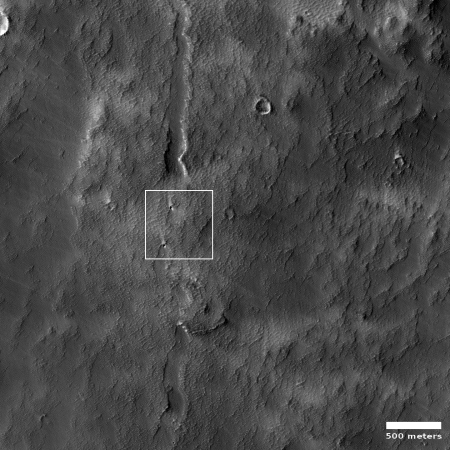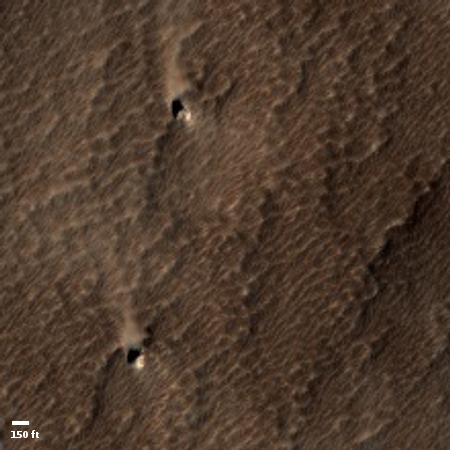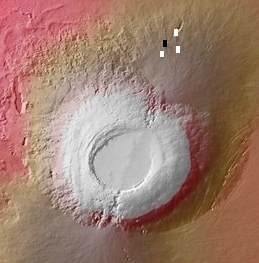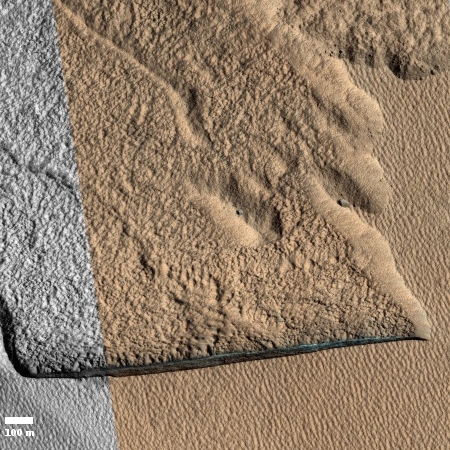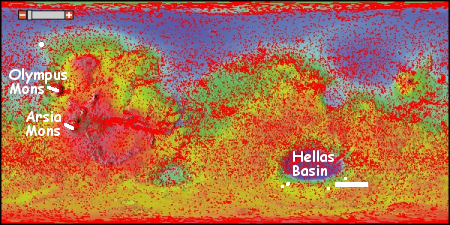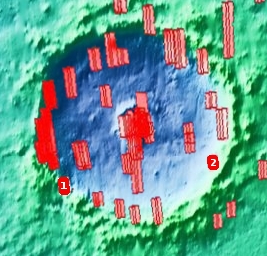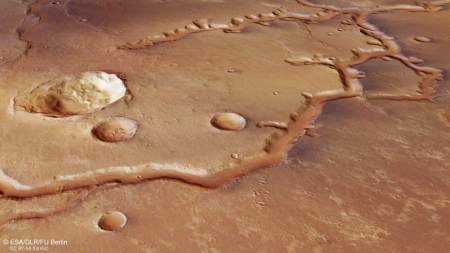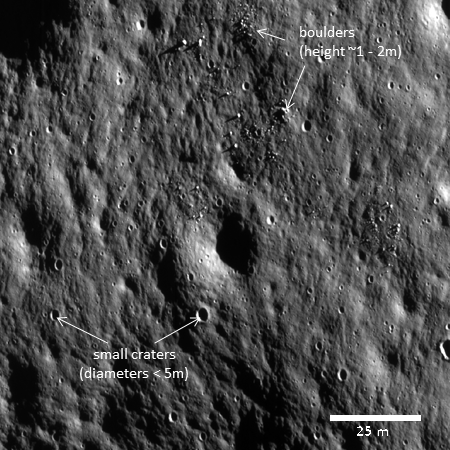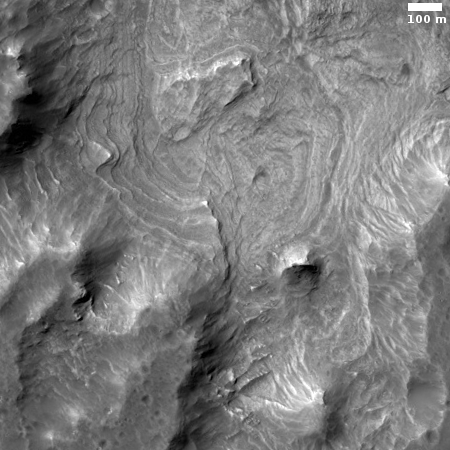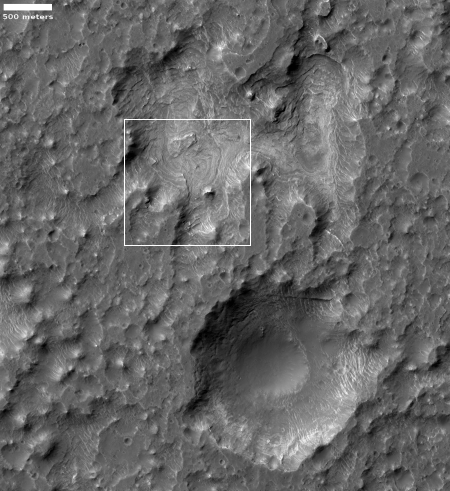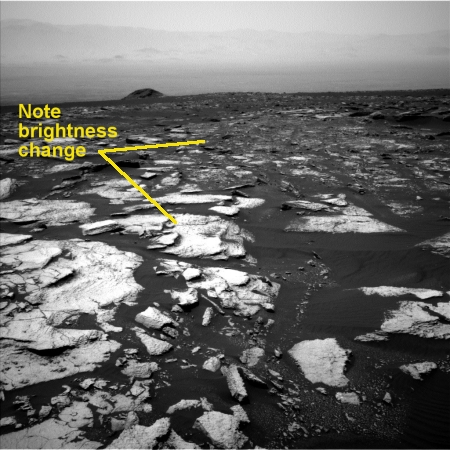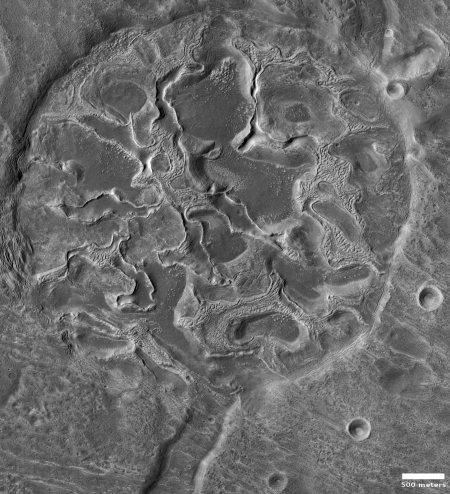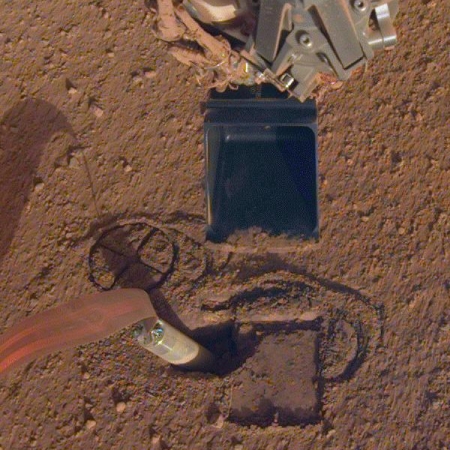InSight’s mole digs an inch
The InSight science team today tweeted that their attempt to use the lander’s robot arm to help the mole push downward in its effort to insert a heat sensor fifteen feet into the Martian interior has resulted in a gain of about an inch or three centimeters.
This success, small as it seems, is important in that it proves that the reason the drill had been stopped penetrating downward was not because of the presence of a rock, but because the drill hole had become so wide that the drill no longer had side friction to hold it in place. They are now using the arm to give the mole that friction.
The goal was to insert to heat sensor five meters or about sixteen feet into the ground. They are presently a little over a foot down. If this effort has really succeeded, they can then proceed to drill the remaining distance.
One issue however is whether the unexpected weak and porous nature of the soil, which allowed the hole to become so wide, might affect any data produced by the heat sensor. This is presently unknown, but it is a significant question that the scientists involved must ask. If the sensor ends up inside a very wide shaft that allows the surface environment to reach the sensor then it will not really be measuring the temperature of the Martian interior.
The InSight science team today tweeted that their attempt to use the lander’s robot arm to help the mole push downward in its effort to insert a heat sensor fifteen feet into the Martian interior has resulted in a gain of about an inch or three centimeters.
This success, small as it seems, is important in that it proves that the reason the drill had been stopped penetrating downward was not because of the presence of a rock, but because the drill hole had become so wide that the drill no longer had side friction to hold it in place. They are now using the arm to give the mole that friction.
The goal was to insert to heat sensor five meters or about sixteen feet into the ground. They are presently a little over a foot down. If this effort has really succeeded, they can then proceed to drill the remaining distance.
One issue however is whether the unexpected weak and porous nature of the soil, which allowed the hole to become so wide, might affect any data produced by the heat sensor. This is presently unknown, but it is a significant question that the scientists involved must ask. If the sensor ends up inside a very wide shaft that allows the surface environment to reach the sensor then it will not really be measuring the temperature of the Martian interior.

